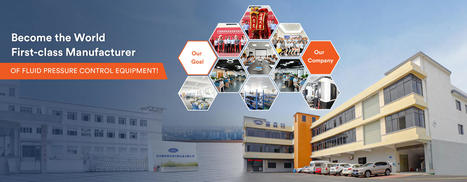Jul. 26, 2022
Machinery

Compressed air is an essential requirement for several industrial processes such as sand blasting, pressure testing, and more. Ordinarily, pressurized air is supplied from standard air compressors such as rotary-screw, rotary vane, and reciprocating piston types. However, for high-powered applications, the air pressure from these systems is usually insufficient to perform a given process.
Therefore, plants may need to boost the air pressure coming from the primary feed. Special processes in industrial plants require oil-free or lubricated air at very high pressures.
High-pressure compressed air can be generated conveniently and efficiently using booster compressors. But what are they?
This article will discuss what booster compressors are, their principle of operation, and common industrial applications.
What Is a Booster Compressor?
A booster system is a piece of equipment used to increase or amplify the air pressure coming from an existing compression system by passing it through additional compression stages. Booster air compressors can raise existing air pressures between 80 – 150 psig to as much as 2000 psig.
Using an air pressure booster pump is one of the most cost-effective ways to obtain higher process gas pressures required at industrial plants.
Air Pressure Booster Working Principle
A booster air compressor or compressed air pressure amplifier operates on the simple principle that within a closed system (non-vacuum), the pressure increases as volume decreases. An air booster compression system comprises a receiver tank, pipework, and discharge tank.
The receiver tank has an inlet that receives compressed process air coming from a primary feed and channels it through several compression stages to further increase the pressure. Additionally, the receiver tank serves as a limited storage capacity for when the system is not actively delivering compressed air.
After going through a series of compression stages, pressurized air flows through the piping into the discharge tank which contains an outlet that supplies the gas to the site.
Air Pressure Booster Applications
Related links:Air pressure boosters are utilized in several industrial applications including the following.
PET Bottle Manufacturing
Automated polyethylene terephthalate (PET) manufacturing requires a continuous supply of high-pressure gas that standard compression systems cannot provide. Booster air compressors help deliver high-pressure air to blow molding machines that produce PET bottles. The blow molding technique utilizes compressed air to force the molten thermoplastic into a mold.
Industrial Pressure Testing
Pressure testing of pipelines, tubing, vessels, piping systems and more helps to determine their integrity, reliability, and leak tightness before and after being commissioned at a site. It is usually carried out during maintenance operations to ensure that essential equipment is functional and in good condition.
The compressed air or nitrogen leak test procedure (also called pneumatic testing) involves passing compressed air through the container to a required pressure range and subsequently ‘bleeding off’ the gas via pressure relief valves located on the system under test. A pneumatic booster pump or pneumatic air pressure booster is suitable for this purpose.
Oil and Gas Production & Transportation
Pressurized fluids such as carbon dioxide (CO2) and nitrogen gas are useful for special processes involved in hydrocarbon production. During the secondary recovery and enhanced oil recovery (EOR) phases of crude production, pressurized gas may be used to increase the pressure within the formation to stimulate the well and ramp up declining production.
Some examples are gas lift and nitrogen injection techniques. Additionally, high-pressure air or nitrogen can be used to purge hydrocarbon pipelines of impurities and toxic substances. This type of nitrogen purging for pipeline drying can help during pipeline decommissioning or commissioning.
Booster systems can amplify gas pressures of onsite nitrogen generators or air compressors to enable these processes.
Booster vs. Compressor: Which Do You Need?
Both air booster systems and air compressors deliver pressurized air. However, compressors that have a booster system attached can achieve up to ten times greater air pressures than standard systems. If your process requires a high range of pressures, then you will need an air pressure multiplier.
Related Articles
If you are interested in sending in a Guest Blogger Submission,welcome to write for us!
All Comments ( 0 )